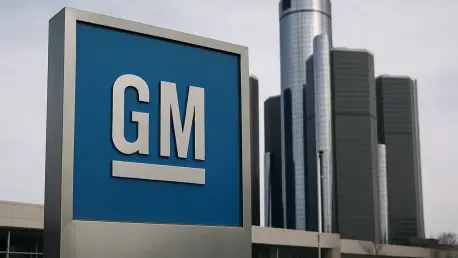Introducing Kwame Zaire, a renowned expert in manufacturing and production management, particularly distinguished for his insights on predictive maintenance, quality improvement, and safety in the automotive sector. Zaire’s fascination with electronics and equipment has fueled his influential voice in shaping industry standards. Today, he provides his perspective on the economic challenges and strategic maneuvers within General Motors amidst fluctuating trade policies and the ever-evolving landscape of the automotive sector.
Can you explain the reasons behind the 35% decline in GM’s second-quarter profits?
The 35% drop in GM’s profits can be attributed primarily to the significant impact of tariffs imposed on their operations. These tariffs have increased the costs associated with importing and exporting vehicles and parts, directly affecting their financial performance. Additionally, indirect costs linked to these tariffs have compounded these challenges, impacting profit margins.
How has GM managed to top expectations despite the profit decline?
Despite the decline in profits, GM managed to exceed expectations due to its robust operational performance. The company focused on strategic initiatives such as cost management, pricing adjustments, and leveraging efficiencies within its manufacturing processes, all of which contributed to stronger-than-anticipated earnings.
What specific steps is GM taking to reduce its tariff exposure, and how effective have they been so far?
GM is actively investing $4 billion to reduce its tariff exposure by relocating production from Mexico to U.S. plants. This approach aims to mitigate the costs associated with cross-border trade. Although the full effectiveness is yet to be realized, initial measures have shown promise in alleviating some of the anticipated $4 to $5 billion gross tariff impact.
Can you elaborate on GM’s strategy for adapting to new trade and tax policies?
GM’s strategy involves a multi-faceted approach that includes adapting its operational infrastructure to be more agile and flexible. This involves reassessing global production lines and potentially re-shoring certain manufacturing activities to further insulate against unpredictable trade and tax policy changes.
GM is mitigating 30% of its tariff impact through various measures. Could you detail these manufacturing adjustments and cost initiatives?
The mitigations involve manufacturing adjustments, such as redesigning production processes to enhance efficiency and reduce waste. Additionally, GM has implemented targeted cost initiatives, including renegotiating supplier contracts and optimizing logistics to curtail expenses while improving overall productivity.
How has the $1.1 billion net impact from tariffs in the second quarter influenced GM’s operations?
This net impact has prompted GM to reevaluate its supply chain strategies and refocus on operational efficiencies. The company is striving to absorb these costs without passing them onto consumers, which necessitates stricter cost controls and innovative manufacturing adaptations.
What challenges are expected due to higher net impacts of tariffs in the third quarter, and how is GM preparing for them?
As tariffs continue to exert pressure, GM anticipates an even greater impact in the third quarter. To prepare, GM is enhancing its contingency plans, exploring alternative sourcing options, and reinforcing its domestic production to cushion against further economic repercussions.
How do GM’s current earnings compare to last year, and what factors contribute to these changes?
Comparing GM’s current earnings to last year’s, there is a notable decrease. Factors driving these changes include increased tariff-related costs and disruptions in the global supply chain, alongside strategic investments aimed at future-proofing the business model.
Why do you think GM’s revenue, despite a decline, has surpassed Wall Street’s estimates?
GM’s revenue has surpassed estimates due to their proactive approach in managing costs and their ability to capture market demand effectively. This includes strategic pricing and leveraging new market opportunities despite a general decline in overall revenue.
Could you discuss the trends in EV sales growth, particularly in light of the upcoming expiration of the $7,500 EV tax credit?
EV sales have shown growth momentum, with increased consumer interest and infrastructural support. However, the looming expiration of the EV tax credit poses a challenge, potentially dampening future sales unless offset by further incentives or advancements in EV affordability and technology.
How does GM plan to adjust to the slowing EV industry growth while maintaining its focus on electric vehicle production?
GM plans to navigate decelerating EV sales growth by prioritizing product innovation and emphasizing competitive pricing strategies. They continue to focus on enhancing battery technology and expanding the manufacturing footprint to address shifting consumer demands.
What are GM’s strategies to prioritize customers and brands amid changing demand?
GM’s customer strategy involves deepening brand loyalty through personalized services and maintaining rigorous quality standards. They aim to differentiate their offerings and ensure responsiveness to market trends, incorporating customer feedback into brand development.
In what ways does GM leverage its domestic battery investments and profit-improvement plans?
GM utilizes domestic battery investments to bolster production capabilities, aiming for higher efficiency and performance. Their profit-improvement plans focus on streamlining operations, refining production processes, and investing in sustainable technologies to capture future market value.
According to Wedbush analyst Dan Ives, GM has been impressively navigating the current auto industry challenges. What do you think has contributed to this successful navigation?
GM’s success in navigating challenges stems from its strategic foresight and adept management amidst complex industry shifts. Commitment to innovation, investment in technology, and robust operational strategies collectively drive this accomplishment.
How has GM maintained its full-year financial forecast despite the potential impact from auto tariffs?
GM’s ability to uphold its financial forecast lies in its meticulous planning and strategic responses to evolving economic conditions. Emphasizing core operational strengths and actively seeking efficiencies across the board has allowed GM to remain resilient.
Could you provide more details on GM’s $4 billion investment plan to shift some production from Mexico to U.S. plants?
This investment intends to fortify GM’s domestic manufacturing presence, reduce tariff burdens, and drive growth across its product lines. By transitioning production stateside, GM enhances supply chain resilience and capitalizes on regional market dynamics.
What were the motivations behind President Trump’s executive orders to relax tariffs, and how have they affected GM and the auto industry?
President Trump’s decision to relax certain tariffs was driven by the need to balance trade dynamics and support domestic manufacturing sectors. While this alleviates immediate pressures, the auto industry still contends with long-term competitive adjustments.
What impact have the tariffs had on the competitiveness of U.S. production worldwide?
The tariffs have heightened production costs, causing U.S. manufacturers to reassess international competitiveness. While encouraging domestic production, these costs threaten to erode price advantages in global markets, necessitating strategic balancing efforts.
Can you share insights into the broader effects of uniform tariffs on U.S. automakers, particularly the cost for GM and its Detroit counterparts?
Uniform tariffs have considerable financial implications for U.S. automakers, significantly driving up production costs and challenging profitability. For GM and its Detroit counterparts, this necessitates strategic realignments and heightened focus on cost mitigation.
How does GM’s recent financial performance compare to Stellantis, given their reported net loss due to U.S. tariffs?
GM’s financial performance, while impacted by tariffs, demonstrates resilience in comparison to Stellantis’s reported net loss. Effective cost management, strategic investments, and maintaining a diverse portfolio have helped GM mitigate adverse impacts more effectively.
Do you have any advice for our readers?
For readers engaged in the automotive sector, staying informed about macroeconomic policies and industry trends is crucial. Embrace innovation and agility as key drivers of success, and maintain adaptability to navigate evolving global challenges.









